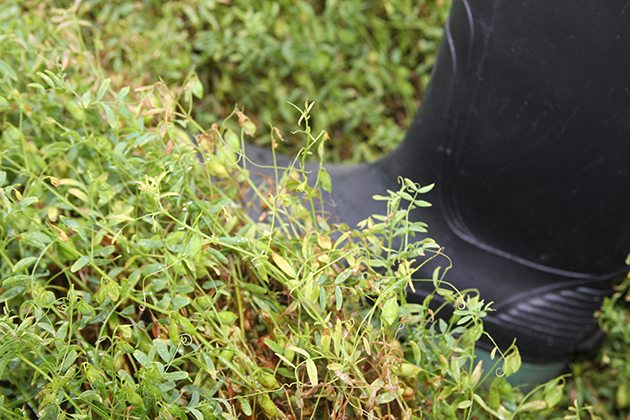All indications point to lower grain prices this fall as compared to the prices available off the combine last year.
In some cases, higher yields will more than compensate. In other instances, gross returns will drop.
Feed barley prices have slipped quickly in recent weeks. A central Saskatchewan bid of $3.50 a bushel was available not long ago, but now quotes are in the range of $2.50. Feed barley was worth around $3.75 at harvest time last year.
It will take a 75 bu. per acre crop to match the returns from a 50 bu. crop last year.
Read Also

Trump’s trade policies take their toll on Canadian producers
U.S. trade policy as dictated by president Donald Trump is hurting Canadian farmers in a multitude of ways.
CWRS wheat last fall was around $6.15 per bu. The Price and Date Quotes (PDQ) website puts the current price for No. 1 with 13.5 percent protein in the $5.50 range depending on location.
Durum still maintains a sizable price premium to spring wheat, but its price has dropped significantly.

Some lentil fields in Saskatchewan may be abandoned because of the excess moisture they received this summer. | File photo
The crop was worth about $8.75 last fall, depending on grade and location. The PDQ price quote for No. 1 with 13 percent protein is currently $6.80. Last year’s 30 bu. per acre crop will need to be nearly 40 this year to generate the same gross return.
It will be interesting to see how the fusarium levels turn out this year, considering how wet it’s been in the traditional durum growing regions.
Canola prices have softened, too.
Prices were generally less than $9.50 a bu. at the end of July, which is a dollar or more below the prices available last September. This should be a good year for canola yields in most regions, so the yield improvement over last year may compensate for lower prices for many growers.
Flax acreage is down dramatically this year, which is probably one of the reasons why flax prices have held up reasonably well. A price of $12.50 a bu. was typical a year ago, and many current flax bids are now in the $12 range.
Sometimes the rush to deliver yellow peas off the combine pushes prices lower. New crop price suggestions are now in the $7.50 to $8 a bu. range, which is probably 50 cents to $1 lower than last fall.
The state of the lentil crop has the entire industry guessing.
It’s easy to spot the cropping wrecks when driving through some of the traditional lentil growing areas that have received a lot of rain. Entire fields are drowned out and/or rotted out.
However, there are also good looking crops in many regions.
The latest crop report from the Saskatchewan agriculture ministry rates the lentil crop as 15 percent excellent, 47 percent good, 26 percent fair, 10 percent poor and two percent very poor.
Disastrous-looking fields are easy to spot, but the rating doesn’t indicate a disaster. However, rainfall in August could have a huge impact on lentil crop quality and the price spread between grades.
New crop red lentils for No. 1 and 2 grades are currently listed at around 30 cents a pound, down dramatically from the contract prices available earlier in the year. Thirty-five cents was a typical price last fall, and it just kept increasing from there. Will lentil prices again explode after harvest or will they languish?
New crop prices for large green lentils of good quality are well over 40 cents a lb.
As always, weather will have a huge impact on crop quality and ultimately on overall returns. A continuation of rain will be costly.















